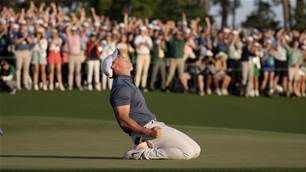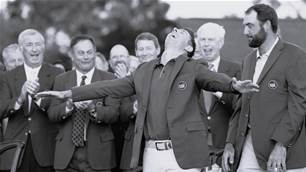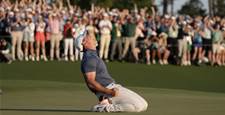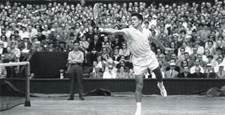While men’s tennis enthralls with its quartet of superstars routinely battling it out for supremacy, the women’s game has got problems. BIG problems. LOUD problems ...
Slamless No.1s
Nothing has damaged the brand more than Slamless No.1s. Once upon a time, you had to win a Grand Slam title ‒ or multiple Slams ‒ to get to No.1. These days, the road to the top ranking can bypass the majors. It’s a credibility crisis the men don’t have. Nobody questions whether Novak Djokovic deserves top-dog status. The men have had one majorless No.1 ‒ Marcelo Rios in 1998. The women have had three in the last five years ‒ Jelena Jankovic, Dinara Safina and Wozniacki.
Most problematic was the curious case of Caroline Wozniacki, who not only failed to win a Grand Slam, but didn’t even reach a final during her 15-month reign. The bouncy Dane barely set foot in Australia for her first major as world No.1 in January, 2011 when the broken-record line of questioning began: “Do you deserve your No.1 ranking?” Yes, it was tiresome. It was also valid. Even former No.1 Chris Evert, calling herself “Chris from Florida”, phoned in to ESPN to pose the question. The besieged 20-year-old, looking to deflect the negative focus and inject her Little Miss Sunshine persona, lobbed a spurious kangaroo-attack story that required a separate press conference and 41 questions to put the kanga in the clear, so to speak.
Wozniacki’s woes had less to do with a rogue kangaroo than a “cat’s away, mice will play” scenario. She made the most of Serena Williams’ year-long absence from mid-2010 and Kim Clijsters’ cameo 30-match season in 2011. As world number-one, Wozniacki scarcely crossed paths with top-five opponents, winning two of six matches.
No less anomalous was the reign of the hapless Safina, thrashed 6-0 6-3 by Serena in the 2009 Australian Open final and promoted to top spot soon after. Even a train-wreck 6-1 6-0 semi against Venus Williams at Wimbledon didn’t displace her. Serena won the Big W, but Safina stayed No.1. “I think if you hold three Grand Slam titles, maybe you should be No.1 ... but not on the WTA Tour,” Serena seethed.
Safina recently came out in defence of Victoria Azarenka as a legit No.1, in a thinly veiled reference to her own experience. “The No.1 is not the player who selectively plays major tournaments, even winning them, but the one who is stable over the full season,” said the Russian. “Let the younger Williams play a full season, and then we’ll see who will be the No.1.” Safina copped a raw deal in many ways ‒ not least the likely end of her career at age 25 ‒ but self-interest is trumping logic here. So Serena would be ranked lower if she played more? She rolls through Wimbledon, the Olympics and the US Open ‒ but let’s see her win Tokyo, Toronto and Tashkent!
In the men’s game, the ascension of a new No.1 has logically followed a seismic win on the court. So Roger Federer first rose to No.1 as the Wimbledon, year-end Masters and Australian Open champion. Rafael Nadal dethroned Federer in the classic Wimbledon final of 2008. Djokovic displaced Nadal after beating him in the 2011 Wimbledon final. Federer took back No.1 after defeating Djokovic and going on to win Wimbledon last July. Increasingly on the women’s tour, the rankings seem the product of a mysterious mathematical formula rather than “game, set and match” on centre court.
The players don’t design the rankings system? Well, yes. And no. The ranking system is the product of negotiation with the players. On both tours, the rankings formulae have been tweaked over the years ‒ mostly to induce the stars to play more.
A concession the top players won was the scrapping of bonus points, a sliding scale of bounty points that weighted quality wins according to calibre of opponent. So a player who reached a final by beating Serena earned more points than a fellow finalist who beat a qualifier. The top players felt this bounty on their heads advantaged lower-ranked players, who could swing from the heels and advance faster up the rankings at their expense. The upshot is that wins are counted all the same. The ranking system today is a far blunter instrument for slicing and dicing the numbers. It essentially measures quantity over quality. Ironically, a system that was supposed to benefit top players has robbed the No.1 gong of its legitimacy and lustre. Even the reigning No.1 ranks majors success above the top ranking. “It’s just a number,” Azarenka said at the US Open. “It’s a great achievement, but it’s nothing like lifting a [Grand Slam] trophy.”
If bonus points were still in play, the No.1 player of 2011 would likely have been Petra Kvitova, the Wimbledon, WTA Championships and Fed Cup winner ‒ and the WTA’s own (media-voted) Player of the Year. In ten of the past 15 years, the Player of the Year has not been the No.1-ranked player.
Related Articles

Feature Story: Moving the Needle

The Aussies at The Open














